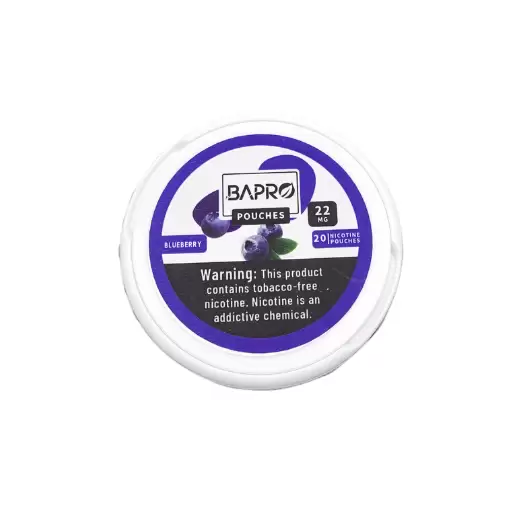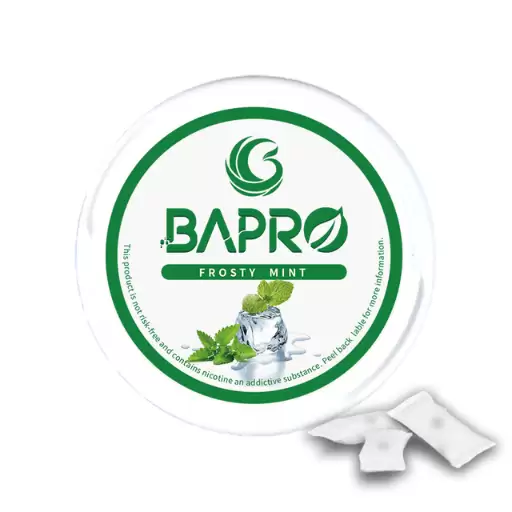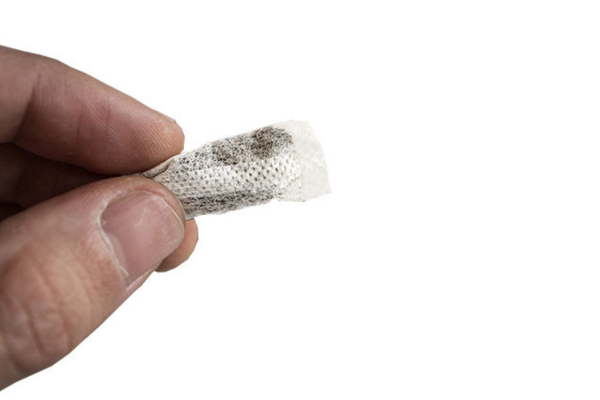Novel products like the vastly popular caffeine pouch – a brand-new caffeine supplementation model recently launched in the European market – reflect the ongoing evolution in the caffeine landscape by impacting consumer behaviour and habits. In recent years, caffeine-based pouches have gained popularity among consumers across Europe. By relying on a caffeine source that differs in both form and preparation compared with the traditional coffee, tea or energy drink, users match their consumption to a variety of specific needs and occasions.
The increasing speed of life in much of European life demands a portable solution to energy needs. People want to be faster – they don’t want the hassle of having to prepare beverages, or even think about buying a drink. Caffeine pouches offer a discreet, easy-to-carry, no-effort way to consume caffeine anytime, anywhere.
What sets these pouches apart is not just their portability but also their appeal to health-conscious consumers. With a clear shift towards healthier, more sustainable lifestyle choices, European consumers are increasingly drawn to products that offer transparency in ingredients, dosage control, and minimal environmental impact. Caffeine-based pouches meet these criteria, offering a straightforward, clean caffeine delivery system that aligns with the modern consumer’s values and preferences.
As we delve deeper into the specifics of caffeine-based pouches, including their science, benefits, and the role they play in Europe’s energy consumption landscape, it’s clear that these innovative products are more than just a passing trend. They represent a significant shift in consumer behavior and a step forward in the evolution of caffeine consumption.
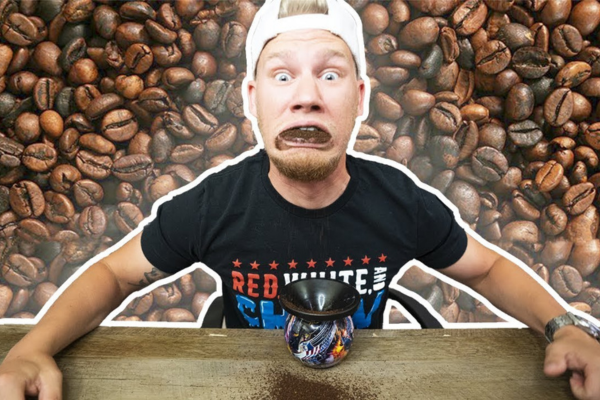
The Science Behind Caffeine-Based Pouches
So, what is behind the rise of caffeine pouches in Europe, a region where swigging strong coffee, espresso or drinking caffeine infused beverages is more the norm. It’s not about convenience or a lifestyle attitude, it’s about the Science, and how caffeine is ingested and its ramifications. Patch or pouch, the rises and falls of caffeine stored in the liver are predecessors of the seemingly effortless highs, spikes and crashes of caffeine ingestion consumed as a beverage.
When you drink caffeine in your coffee, tea or energy drink, it’s absorbed into the bloodstream through the lining of the mouth, stomach and small intestine. With caffeine-filled pouches, this process is optimised because caffeine can be absorbed sublingually and bucally (ie, through the tissues in the mouth). As it bypasses the digestive system, caffeine enters the bloodstream faster, lasts longer and produces an immediate boost in energy, alertness and concentration without the jitters or subsequent ‘crash’ that can come from time-delayed absorption experienced through traditional caffeine sources.
If you compare the caffeine pouch to these traditional sources, some glaring differences appear in terms of the experience of taking the stimulant and its ramifications. There’s coffee, which can be a flavour delight and a ritual enjoyment, but can still produce stomach upset in some and contributes to the garbage heap via disposable cups, and filters. There’s tea, which can produce a gentler and milder (but still quite effective) kick of caffeine, but is harder to take one-handedly on the go and won’t necessarily give you that jolt you crave. And there are energy drinks. While effective, they come with far too much sugar at far too high a dose, and ingredients that don’t fit into most consumers’ definition of natural.
Instead, caffeinated pouches provide a purer, measured dose of caffeine, typically involving only caffeine and other minimal additives to help flavour the experience. This addresses the consumer interest in products that enhance an active, healthy lifestyle without compromising on environmental values or convenience. Caffeinated pouches remain safe when consumed as directed as they allow for cost-effective microdosing of caffeine. This enables consumers to control their intake, thereby reducing the risk of consuming more than what feels healthy or safe for themselves.
Caffeine experts such as Dr Jane Wilson, a British nutritionist and caffeine researcher, have also championed the design. ‘The beauty of caffeine pouches,’ she said, ‘is that you get a timed, controlled buzz, perfect for maintaining energy levels throughout the day without the health-compromising baggage that accompanies other sources of caffeine.
The reason for this transformation, and the reason why caffeine pouches are continuing to gain acceptance within energy consumption habits across Europe, is closely connected to the science behind the product: rather than providing consumers with a less economical and less healthy means of caffeine supplementation, caffeine pouches are delivering an alternative that is in almost every aspect superior to existing methods of caffeine consumption.
Revolutionizing Energy Consumption in Europe
Caffeine pouches have not only become fashionable but also emblematic of a true transformation of the way the Europeans take their energy. Fast-changing trends and consuming habits point to a caffeine revolution. A revolution of more innovative, convenient and healthier sources of caffeine. Caffeine pouches are taking the lead and becoming the perfect product for the modern 21st century’s metal-head.
Perhaps the most powerful clue of this transition is what consumers want with their (increasing) caffeine: Europeans are seeking stimulation that’s not only psychoactive, but one that is fast, easy and part of an overall wellness lifestyle. Caffeine pouches allow for exact caffeine dosing, in a discreet, portable and performance-oriented manner that is popular for hardcore consumers – employees, students and athletes who need consistent caffeine throughout the day.
Case studies of caffeine pouches from across Europe highlight this and suggest this enhanced caffeine product is gaining traction. In Sweden for example (where coffee consumption is the 11th highest per capita in the world), sales of caffeine pouches have also risen particularly amongst dissatisfied younger adults who appreciate the speed and efficiency of it. In the UK, health and fitness communities are embracing caffeine pouches as a pre-workout booster in lieu of energy drinks, appreciating the controlled energy boost sans the sugars and additives of energy drink varieties.
European mass adoption of caffeine pouches, however, is also due to another major movement prevalent in Europe: the drive towards more sustainability. Many caffeine pouch brands are using biodegradable materials for their packaging, making them a much more environmentally friendly alternative to the usual single-use coffee cups or plastic-bottled energy drinks. The European consumer is leaning towards more sustainable products these days as well, which consequently won’t hamper the sales of caffeine pouches.
Consumer psychologists and market analysts have observed this phenomenon in Europe: ‘Caffeinated packets are an innovative entrance in the energy market,’ said Dr Laura Schmidt, a market analyst for consumer goods, ‘as they answer consumers’ new needs in terms of convenience, health and environmental awareness. Their success is a consequence of the new wellness-oriented consumption habits noticeable across Central Europe.’
In examining the advantages and limitations of caffeine pouches – which are similar to the Western supermarket revolution and the energy revolution in Europe – we see that they might not be just a matter of eating on the go. Instead, they reflect a more fundamental trend toward a healthier, greener and more efficient way of consuming.
Benefits of Caffeine-Based Pouches
Caffeine pouches have seen a warm reception in the European market over the years, primarily because of their countless advantages. Not only are they revolutionising the way people consume caffeine, but they’re also coming to the rescue of multiple problems associated with caffeine as we’ve explore the most important benefits that have led to the widespread popularity of caffeine pouches.
Convenience and Portability: Probably the most important benefit of caffeine pouches is their unparallelled convenience. The pouches were designed for people who like to ‘go-go-go’ and the optimal option for them is to carry a pocket, a purse or a backpack. You can make a supply of your favourite drinks anywhere at any time. You can easily enjoy a cup of coffee while driving, workout shopping or even before taking a shower. No need to brew, no need to visit a barista.
Controlled Dosage: The second big advantage is the ability to enjoy caffeine in controlled dosages. Taking just one pouch ensures that you are having a specific dosage of caffeine. Whatever dosage you desire, it’s provided by one pouch. For example, if you want a certain dosage of caffeine and normally you take three cups of coffee for that, now you can take just one pouch of PerkUp and have the equivalent amount of caffeine, which lets you consume it in a healthier manner. People who are sensitive to caffeine also found this very useful since they can’t drink coffee as long as they could in the past. By removing the guesswork from caffeine consumption, it is more appealing for people wanting to maintain alertness and concentration throughout the day while consuming less and limiting their caffeine intake.
Lessened Risk of Overconsumption: By limiting the caffeine content to a finite amount, the pouches minimise the risk of consuming too much. Many people (including this author) may have been aware of, or even experienced, the side-effects of overconsuming caffeine, such as jitteriness, anxiety, heightened palpitations and altered sleep patterns. While sometimes these effects are preferable or desired, what’s great about caffeine pouches is that they make caffeine safer.
Environmental impact: compared to the disposable coffee cups, tea bags and energy drink cans containing conventional caffeine, producing caffeine-infused pouches has a smaller environmental footprint. A number of companies are also turning their efforts to developing packaging that minimises their ecological footprint, an important consideration for green-conscious consumers who are looking for more sustainable products in all aspects of their lives.
Health and Wellness Focus: In a time where many people seem to be getting healthier, caffeine pouches are in line with this movement toward increasing wellness lifestyles. They generally use natural ingredients and typically have much less sugar and artificial additives typical of many energy drinks, making them a healthier alternative for anyone wanting to lead a balanced lifestyle.
Their caffeine-packed pouches both appeal to a new on-the-go mentality and work in tandem with increasingly popular lifestyle themes of wellness and environmentally friendly practices. The pouches’ success in Europe foretells a transformation in the way that people around the world avail themselves of caffeine, one that offers a smarter, cleaner, and more efficient way of making the most of one of life’s profound necessities.
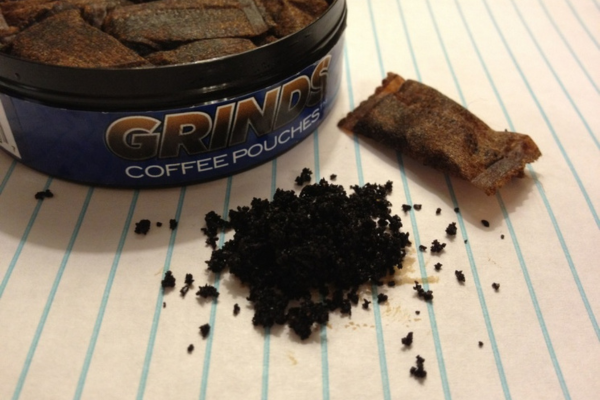
Image Source:https://chadizzy1.blogspot.com/2012/04/grinds-coffee-pouches-review-13-april.html
Challenges and Considerations
On the one hand, pouches deliver caffeine in a new (and novel) way. On the other, they provide new and novel challenges, and it’s these that need to be addressed before any conclusions can be drawn about their place in the market or the effect they might have on consumer health.
Health Problems: Caffeine issued through pouches can be one of the biggest reasons for health problems.
Although each pouch controls the dosage precisely, it is still possible to consume a number of pouches within a short space of time. People can, however,improve it a lot if they increase their dosage.
High levels of caffeine can lead to health problems. People may suffer from insomnia, nervousness and restlessness. Stomach irritation may prevail and the heartbeats may show an increase.
In other words, people should be well aware of dosage guidelines when it comes to consuming caffeine, and the manufacturers need to label their pouches.
Recommended Daily Limits: Equally, health authorities, for example the European Food Safety Authority (EFSA) backed by the European Parliament advises the take-up of a recommended daily amount of caffeine per day up to 400 mg. For pregnant women the recommended is limited to 200 mg. This dose then translates to different limits for the different consumables (for example, for hot drinks 140 ml (depending on the concentration and how fast the coffee can be consumed) and for milk chocolate 2.5 biscuits of 25g each). These recommendations must be observed and communicated to the consumer by caffeine pouches marketed for everyone.
Regulatory Background: Caffeine product regulation varies by European country. Manufacturers of caffeine pouches need to adhere to regulations in each country. These regulations include classification as food or dietary supplement, according to local and European Union food and supplement laws. Some parameters included in these regulations are labelling requirements, safety assessment, and caffeine content restrictions.
Consumer Skepticism and Education: As full of advantages as it may be, there are still many consumers like me who find caffeine pouches a bit hard to believe. I suspect that this extreme skepticism is unique to me and those used to traditional caffeine sources like coffee and tea. But it is still an issue due to individual consumers’ skepticism. The most effective way to tackle this issue is education. Education teams can and should promote the advantages of the pouches. This can help them get over skepticism. Testimonials, scientific studies or endorsements from health personnel such as doctors or pharmacist can be a useful way to convince consumers.
As with all new products, consumer education will be key, says Dr Jack Anderson, a US public health expert: ‘Uptake of any new product must be preceded by proper education of the public to assure both safety and efficacy. Manufacturers and health authorities should work hand in hand to guarantee proper product use by consumers.
Since the use of caffeine pouches is expected to continue to rise, it will be important to continue to work at finding solutions to these issues and questions for ensuring their continued success, while promoting their positive benefits for public health and wellness. By responsible use and use in line with the regulatory framework, we can continue to find the optimal place for caffeine pouches.
The Future of Caffeine-Based Pouches in Europe
Caffeine-filled pouches in Europe seem destined for a brightly coloured future. Innovation, consumer tastes and a changing landscape of caffeine consumption will drive this category forward in the years to come. These six trends and developments are likely to define them.
Next-Generation Pouch Technology and Flavours: Continuing innovation is the key to the caffeine-pouch segment. Manufacturers must keep investing in sophisticated delivery technology to enhance the qualities of caffeine, and flavour profiles will expand so the caffeine-pouch also answers the demands of a more refined market consumer.
Potential for increased market size and growth opportunities: – As awareness and acceptance of the product increase, the market size for caffeine pouches will grow. – As a result of its diverse and sophisticated consumer base, Europe may present the biggest opportunity for growth, especially in countries where caffeine consumption and a culture of wellness that encompasses adopting new health and wellness products exists. – With further global expansion and an opportunity to bring caffeine pouches to new countries, they can become an even more popular product worldwide.
Caffeine pouches in the context of a shift in caffeine culture in Europe: Consumers in Europe are becoming more and more health concious at the same time being more sensitive to environmental issues. By delivering a satisfying caffeine boost, at the time and location of choice as well as in controlled doses, in a product (the pouch) with a minimal carbon footprint, European caffeine pouches represent the smart, sustainable choice. I expect the popularity of caffeine pouches to continue to grow among consumers and become an integral part of the shift in caffeine culture I foresee for Europe.
Hurdles and regulatory obstacles: Despite a bullish outlook, the way ahead for caffeine pouches will be paved with regulatory hurdles and health concerns. The burgeoning market also faces stricter regulations as watchdogs edge manufacturers and marketers on caffeine content, packaging and marketing. Striking the balance will be an ongoing priority for manufacturers to retain consumer confidence.
The value of consumer’s awareness: As a way of ensuring growth, maintaining their market share and expand it further, companies will have to invest in the education the consumer about the main aspects, namely; the advantages, usage and safety of caffeine pouches. This will eliminate bias, and ensure an informed consumer.
Overall, there is really no reason why caffeine-based pouches cannot be successful in Europe and why they would not shape drinking habits of the continent to a great extent. Tomorrow’s innovation, market expansion and the ever-present ‘performance’ factor might just secure a growing share of the caffeine pouches across Europe, aligning the benefits of its product more with the values of its consumers. But regulatory compliance and consumer education would need to be steadily present in order to overcome the difficulties that await in the process. Caffeine pouches can arguably be considered one of the cornerstones of a new generation of energy boosters in Europe.
Conclusion
Europeans are witnessing the dawn of a new era of energy supplementation. With the release of the first caffeine pouches, users gain access to an expedient, efficient and ‘healthy’ energy booster. The act of pouch use is predictable. The very discretion of the product presents a healthy energy source: small, portable and relatively ‘natural’ in essence. A caffeine pouch caters to the lifestyle of the modern caffeine consumer. Its instant and controllable nature appeals to the desire for energy products which help facilitate the on-the-go culture. As caffeine is being absorbed into the bloodstream through sublingual absorption, the appeal of its use become clearer to an audience choosing products that also cater to wellness and environmental sustainability.
The future holds great potential for the caffeine pouch, as innovation in product development, a growing market, and a sustained discourse on health and sustainability, might all play a part in its absorption within the fabric of a shifting European caffeine culture. The road ahead might prove to be bumpy: market acceptance will depend on how regulators and the caffeine industry navigate the numerous health-related questions that arise in connection with this product, and how manufacturers tackle the issue of consumer skepticism.
In conclusion, caffeine pouch is a specific development of caffeine consumption and also a representative of the development trend of caffeine consumption, which is the reflection of the upgrading trend of the consumer and the concept of the society. Caffeine pouches provide consumers with a smart and sustainable way of delivering energy that are environment-friendly and health friendly, which will not only change the European consumers’ caffeine consuming habits but also lead start-up a global revolution in the way we keep energetic.
Caffeine-Based Pouches
FAQs: Common Questions About Caffeine-Based Pouches
What are caffeine-based pouches? Caffeine-based pouches are small packets containing a precise amount of caffeine, designed for sublingual absorption. They provide a quick, convenient way to consume caffeine without the need for liquids.
How do you use caffeine-based pouches? To use a caffeine pouch, simply place it between your gum and lip. The caffeine is absorbed through the lining of your mouth, providing a rapid energy boost.
How quickly do caffeine-based pouches work? Caffeine pouches begin to work almost immediately, with users often feeling the effects within 5 to 10 minutes due to the direct absorption into the bloodstream.
Are caffeine-based pouches safe? Yes, when used according to the manufacturer’s guidelines. It’s important to adhere to recommended dosages to avoid potential side effects associated with excessive caffeine intake.
Can caffeine-based pouches replace my morning coffee? For many people, caffeine-based pouches can serve as an alternative to morning coffee, especially when convenience or a quick energy boost is needed. However, the social and sensory experience of drinking coffee may not be replaced for some.
Do caffeine-based pouches have any side effects? Like any caffeine product, possible side effects include jitteriness, increased heart rate, and disturbed sleep patterns if consumed in large amounts or late in the day. Moderation is key.
Are caffeine-based pouches environmentally friendly? Many brands of caffeine pouches focus on sustainability, with biodegradable packaging and minimal waste compared to traditional coffee or energy drink containers.
How do caffeine-based pouches fit into a health-conscious lifestyle? Caffeine pouches offer controlled dosages of caffeine, making it easier to manage intake. They contain little to no sugar and lack the artificial additives found in many energy drinks, aligning with a health-conscious approach to energy supplementation.
References
Grinds Coffee Pouches: Introduced as a healthier alternative to chewing tobacco, Grinds Coffee Pouches contain flavored coffee that users can chew. Each pouch is equivalent to 4-5 cups of coffee, offering a significant caffeine boost without the health risks associated with tobacco use. They come in flavors like mocha, mint chocolate, and cinnamon roll. This alternative is presented as a way to enjoy the ritual of chewing without harmful chemicals.
Outlaw Dip: Offers a range of tobacco and nicotine-free products with unique flavors like Blueberry, Root Beer, and Mango. These products are highlighted for their strong flavors and are recommended for those looking to quit tobacco. Outlaw also introduced a caffeine-based product called “Cup of Joe,” containing 1500 mg of caffeine per can, equivalent to about 15 cups of coffee, providing a significant energy boost.
Cannadips Fuel: A line of products by Cannadips, focusing on sleep and energy. The sleep products contain CBN (Cannabinol) and a low dose of melatonin, designed for rapid delivery to aid sleep. The energy products, called Cannadips Go Fuel, contain CBG (Cannabigerol), caffeine, and guarana, aimed at providing an on-the-go energy boost.
Transparent Labs Stim-Free and Kaged Stimulant Free are notable mentions for those seeking pre-workout supplements without caffeine. These products focus on delivering energy and enhancing workout performance through ingredients other than stimulants. Transparent Labs offers a Peach Mango flavor that’s well-received for its taste and efficacy in providing massive pumps and enhanced performance without caffeine.
For caffeine content in common beverages, the Mayo Clinic provides an insightful guide. For adults, up to 400 milligrams of caffeine per day is generally considered safe. This guide breaks down the caffeine content in various drinks, such as brewed coffee (96 mg per 8 oz), brewed black tea (47 mg per 8 oz), and cola (22 mg per 8 oz).

